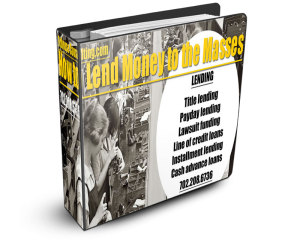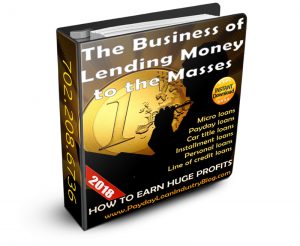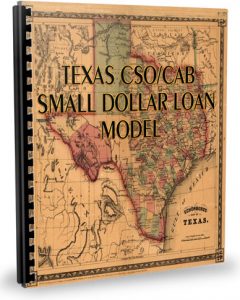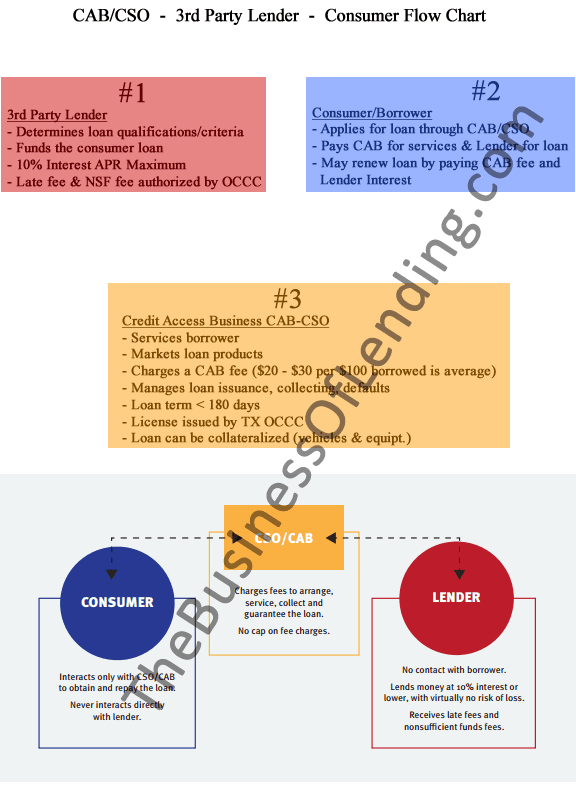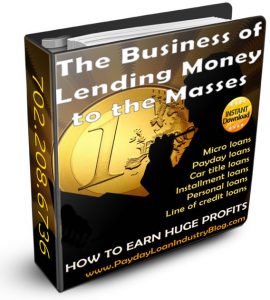The Business of Lending Money to the Masses
I’m asked every day if there is still an opportunity for lenders to achieve an extraordinary ROI on their money by lending money to the masses.
No doubt Dear Reader, you are inundated with ads daily offering you immediate cash via direct mail, TV, billboards, Fintech offerings, Dave.com, radio, podcasts, online ads … just like I am.
So… you’re jaded. You’re an investor and an entrepreneur. You’re immune to these pleas made to borrowers to accept a lenders’ money.
WHO CAN”T GET THEIR HANDS ON $700 in a pinch?
The answer? Tens of millions of ordinary people all around the world.
According to the latest research by the Center for Financial Services Innovation (CFSI), 57% of Americans are not financially healthy. The situation is critical – 40% can’t come up with $400 in an emergency. The FED’s numbers are that 70% of consumers cannot come up with $1000 in an emergency!!
DO YOU REALLY NEED THESE STUDIES? Look around. Talked to your Uber driver lately? Your DoorDash delivery person? Any friends or family members working in the “gig economy?” In spite of their college degree, they’re forced to work as a barista? How about your local entrepreneur who needs cash today in order to pay for his supplies or make payroll until paid by her client?
The car breaks down; they can’t work. The lights get turned off. Their bank NSF’s 3 checks; the biggest one first. That’s 3 NSF’s amounting to $105.00! Can’t pay the deductible for their elective surgery.
THERE ARE OPPORTUNITIES UNDER YOUR NOSE TO PUT YOUR MONEY TO WORK!
What loan products are these tens of millions of consumers and small businesses looking for? Advance law suit funding, lap band surgery, car title loans [Auto/RV/Motorcycle], bitcoin & crypto, single payment [Payday], installment, amortized, line-of-credit, personal loans, biz startup funding, cash advances, vacation funding, designer watches and on and on! YES! YOU think many of these loans are for stupid reasons BUT they make sense for millions of folks DAILY!
The need for access to money by consumers is so overwhelming that Lenders can focus on niches. Here’s a few listings to get your idea muscle moving:
- Think Sofi: focused on student debt
- SALT Lending: focused on bitcoin and ethereum as collateral
- Diamond Banc: Loans on luxury watches
- Lending Club: peer-2-peer lending
- CasnNetUSA: payday and installment loans
- Lending Tree: debt consolidation peer2peer
- Joey’s Auto Title: face-to-face car title loans in Albuquerque
- Norris Group: hard money RE lenders
- Prodigy Finance: lends to international students to
- Insikt: consumer lending [The founder started at the rear of a Latino grocery store.]
- LendingPoint: small online consumer loans
- World Acceptance: face-to-face sub-prime consumer loans; $120M/quarter.
- Oakum: lends only to immigrants
- Wilshire: face-to-face car title loans to Koreans in Los Angeles
- Fulcrum: Online and face-to-face personal loans to Haitians in Miami
- Blinker: sub-prime car finance via an phone app
- Dave: sub-prime personal loans via phone app
- Accion: funds underserved small businesses
- Groundfloor: real estate platform for non-accredited investors
- CircleUp: Consumer goods financing
- Fluid: Founded by our friend Timothy Li. Consumer credit for students.
Put on your thinking cap! What experiences do you bring to the business of lending money? Challenges? Hardships? Don’t you think there are millions of others out there facing the same financial challenges you have?
Tap into this! How do you solve these challenges, service these millions of borrowers in a humane way AND MAKE SOME SERIOUS MONEY?
Little. Big. Lenders come in all colors and flavors.
Ready to launch your loan business? Start here: “The Business of Lending to the Masses.”
“How to Start a Consumer Loan Business & Lend Money to the Masses”
